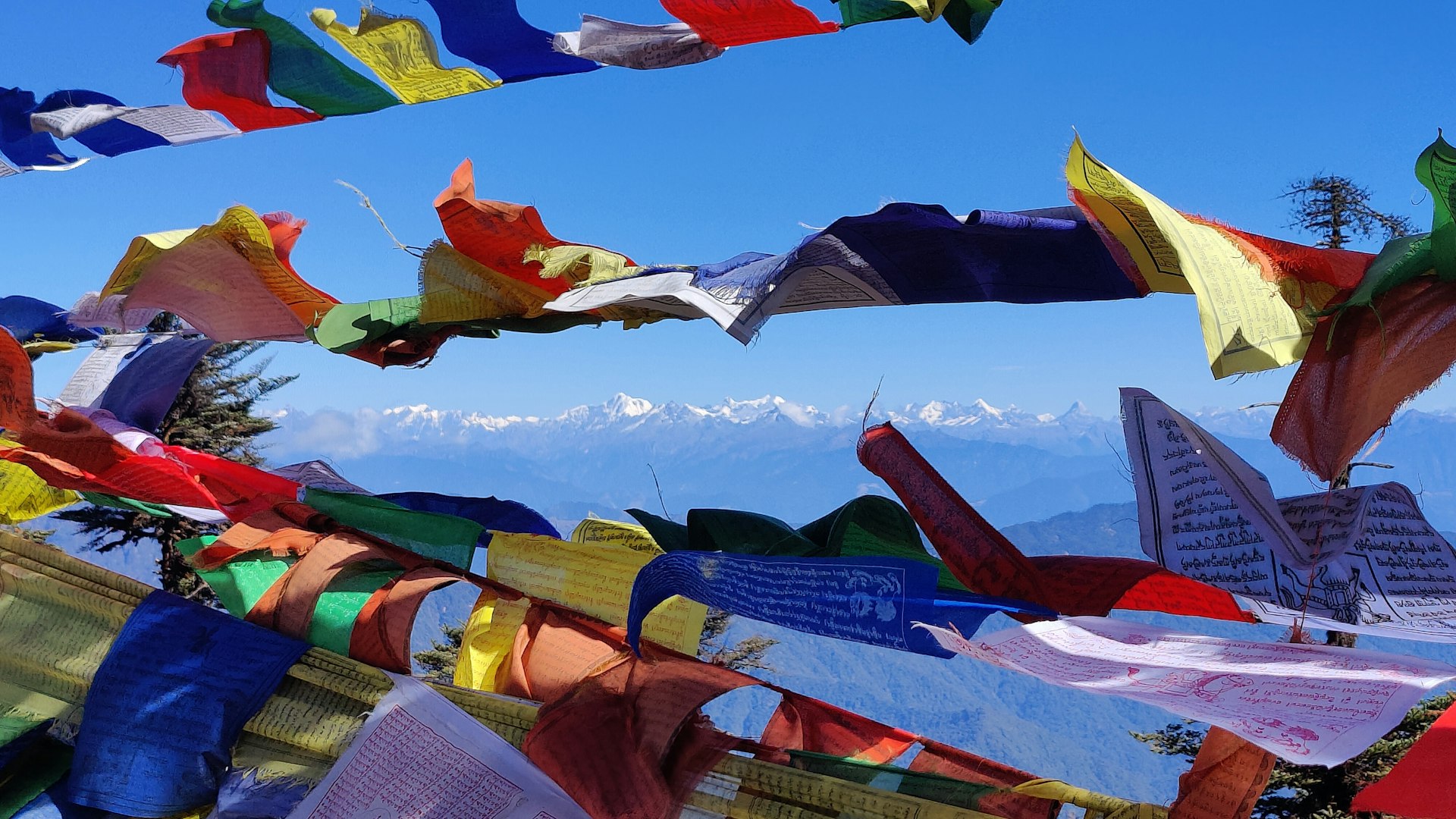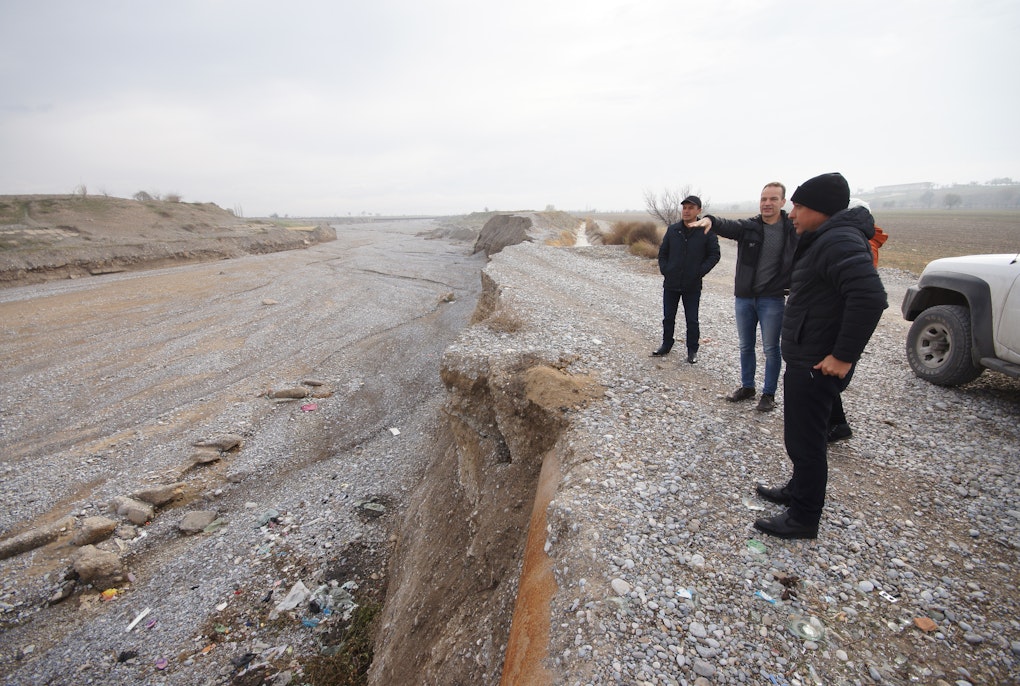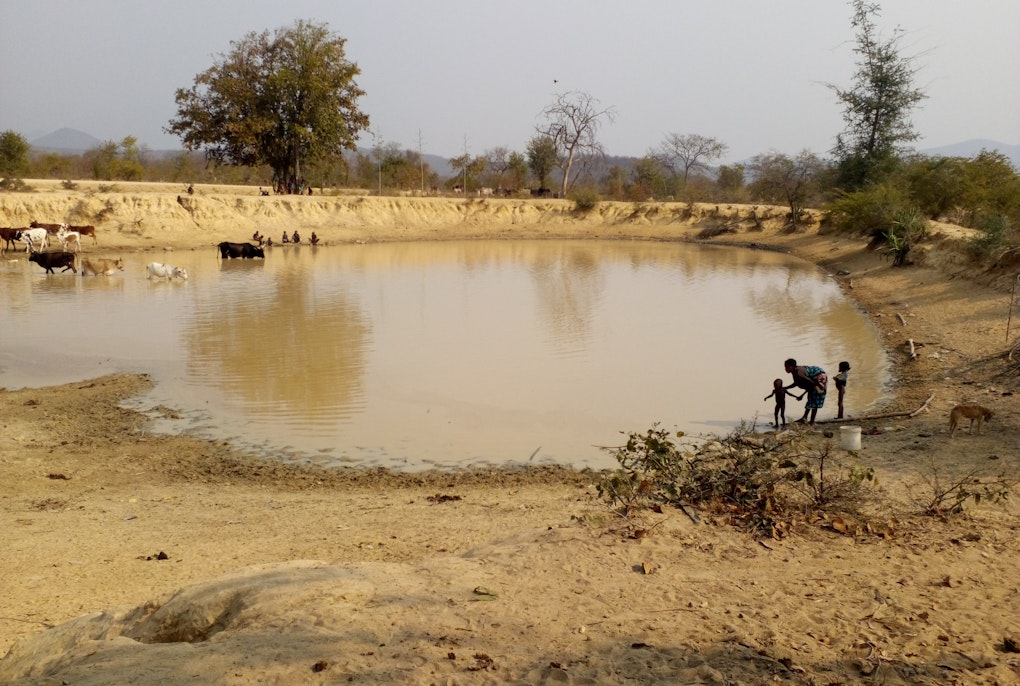magazine_ Article
The case of Bhutan
A research team from South Tyrol travels to Bhutan to train experts in analysing climate risks and returns with the insight that the Himalayan state has a lot to teach.
Sacred peaks. In Bhutan, these high mountains, framed by prayer flags, are considered the abode of the gods and may not be climbed.
Photo: Marc Zebisch | Eurac Research
Effective adaptation cannot be undertaken without a precise climate risk analysis: to minimize negative impacts, it is necessary to know not only the imminent dangers but also the vulnerabilities of a certain area. Kathrin Renner and Marc Zebisch have many years of experience in diagnoses such as these and have developed methods that are now used worldwide. They recently passed on their know-how to forestry scientists in Bhutan and were impressed by the country’s environmental awareness.
Even the in-flight brochure was remarkable. On the Bhutan Airways flight to Paro, Kathrin Renner opened a two-page flyer, “which outlined the country’s values. And there were some key points: no emissions, no pollution .... These are all things that we also want but they are not a priority for us. Yet, in Bhutan, they are.” The small kingdom in the Himalayas, famous for making happiness, not growth, a priority, “impressed” Renner with this attitude to environmental issues. A few weeks after the trip she recalls: “There is simply an understanding there that nature is the basis of existence.”
Renner is an expert in climate risk analysis: she diagnoses the changes that an area can expect due to climate change and how the changes may interact with local ecological, social, and economic conditions and affect different areas of life. However, she and her colleague Marc Zebisch were not in Bhutan to carry out a risk analysis but to teach the methodology to a group of local forestry scientists as part of a United Nations Environment Programme (UNEP) project.
There, the forestry scientists themselves also turned out to be remarkable. Spending many months of the year in the forest, often several weeks at a time, the local teams not only record animal and plant species and but must also look after themselves. They are as familiar with the way of life in the villages as they are with the wilderness. “Of course, these are ideal conditions for carrying out a climate risk analysis,” says Renner: “The local team were able to answer many of the questions that came up from their direct experiences.”
The training took place at the forestry station in Trashigang, a small town in the far east of the country. The journey there from Paro airport in the west took two days of driving through the country, winding up and down serpentine roads, the mountains are steep and rarely do the valleys widen. Settlements nestle against the slopes and, depending on the altitude, people plant bananas and mandarins, rice, corn and vegetables. So far, the farmers have seen the changes caused by climate change more as an advantage, says Renner: “In the villages, we were often told that certain vegetables now also grow at higher altitudes.”
70 percent of the country is forest. In fact, Bhutan’s constitution stipulates that at least 60 percent of the country must be covered by forest. A large part of this is so-called primary forest which has not been affected by human use. There are various government programmes to protect the forests, and higher and lower-lying communities must make agreements that recognize the value of “ecosystem services”. Zebisch goes on to explain, “Those lower down pay those higher up to preserve the forest and keep the streams clean,” says Zebisch. “It’s easy to see how important the protection of natural resources is there and, because the country has been very careful with its resources, it is now better equipped to deal with climate impacts; forests act as a buffer – if there is a drought, for example, water can still come from a forested region.”
This is not what Zebisch is used to seeing. In poor countries in particular, the overuse of resources often exacerbates the consequences of climate change. For the same UNEP program, Zebisch and Renner analysed climate risks for mountain regions in Central Asia, in Tajikistan and Kyrgyzstan, and found that due to excessive livestock numbers, the already barren slopes are hopelessly overgrazed, making the soil much less able to withstand the increasing heat and likelihood of drought (see project report).
Because Bhutan has been very careful with its natural resources, it is now better equipped to deal with the effects of climate change.
Marc Zebisch
Drought is becoming a problem in many mountain regions because glaciers are shrinking, and less snow is falling. This results in a lack of meltwater during the growing season. In Bhutan, however, drought mainly affects energy production when the rivers carry less water as the country generates a lot of its electricity from hydropower. Most people in Bhutan derive their livelihood from agriculture which depends on the rain that the monsoon brings. Analyses by the University of Natural Resources and Life Sciences in Vienna have shown that the monsoon season is no longer quite as predictable as it used to be but it is currently impossible to say how these patterns will change in the long term.
However, during the transitional period in spring, when it is getting warm but is still dry, water sources such as springs sometimes dry up. Zebisch and Renner were told about this occurring in two villages – in one, the local administration laid a pipeline from another spring, and in the other, a water reservoir was installed. “The government really looks after its rural regions,” says Zebisch. Yet another thing that sets Bhutan apart from Central Asia.
Renner and Zebisch explain their methodology using a comprehensive and systematic sourcebook that they wrote with a team on behalf of GIZ: the Deutsche Gesellschaft für Internationale Zusammenarbeit (see box). Part of the analysis consists of using climate data to determine the changes that have already occurred as well as those to be expected; it is also important to filter out the factors and complex interrelationships that make an area vulnerable in the discussions and workshops that take place on site since that is where you can actually start from. In the short term, nothing can be done about dangers such as rising temperatures but, negative effects can be contained through strategic adaptation. The forestry scientists immediately understood this approach: “They thought it was a good idea to start with real people’s problems,” says Renner. Of course, you first must survey the situation the people are in, but the Bhutan scientists are used to this too and had already conducted surveys in the villages for other studies and know how to obtain representative results. “They are familiar with qualitative research like this.”
The risks that the forestry scientists ranked highest in the training workshop were forest fires, reduced water availability and increasing conflicts between humans and wild animals. Renner and Zebisch were struck by how confidently the scientists made their decisions, “precisely because they know the area inside out,” explains Renner: “When I think about how difficult it was at workshops in Germany to get people to make an assessment, I wonder if we’re often too cerebral?”
The forest scientist’s climate risk analysis has not yet been completed and the surveys have yet to be evaluated but Renner’s general impression is that the country is “well positioned” to deal with the challenges, “simply because nature has always been protected. I think it’s a question of education, of values.” Marc Zebisch says: “In Bhutan, sustainability is really understood as preserving what is already there.” Adding a point Renner has now become used to hearing from him: “South Tyrol could learn a lot from Bhutan.”
 technical documentation
technical documentationClimate Risk Sourcebook
Climate impact researcher Marc Zebisch and his colleagues have developed methods for the comprehensive analysis of climate risks that have been used in countries around the world for years. A central element of the concept are the “impact chains” which map the complex relationships between climate change and specific local conditions. In a new guide: Climate Risk Sourcebook – Adaptation Community which focuses on communication, gender and vulnerable groups, the team explains the approach step by step. The sourcebook was commissioned by GIZ: the Deutsche Gesellschaft für Internationale Zusammenarbeit.
For more: [Climate risk assessment for mountainous communities of Tajikistan and Kyrgyzstan] (https://www.eurac.edu/doi/10-57749-sm1a-b467)
UNEP project Vanishing Treasures in Bhutan: https://www.unep.org/news-and-stories/story/bhutan-endangered-bengal-tiger-making-comeback https://storymaps.arcgis.com/stories/37a2a12ac45042a7856cc97efce6e3d5/
Kathrin Renner
Kathrin Renner works at the Center for Climate Change and Transformation at Eurac Research. She holds an MSc in Geography from the University of Leipzig and an MSc in Geographical Information Science from University College London. Currently, her focus includes vulnerability and climate risk assessment, spatiotemporal modelling and mapping for enhanced integrated risk assessment, and GIS data management and visualisation. She is co-author of the Climate Risk Sourcebook.
Marc Zebisch
Marc Zebisch is the Head of the Center for Climate Change and Transformation at Eurac Research. He holds a PhD from the Potsdam Institute for Climate Impact Research and the Technical University of Berlin. With 15 years of experience, he has been engaged in climate impact research and climate risk assessments. Since 2005, he has played a crucial role in the climate risk analysis for Germany and is a member of the Climate Change and Adaptation Topic Center at the European Environment Agency (EEA-ETC CCA), the Steering Committee of the Austrian Climate Research Program (ACRP), and the Climate Council of the Alpine Convention (ACB). He is part of the project team working on the development of the climate risk analysis for Europe. Additionally, he is the author of the international guide for climate risk assessments, the "Vulnerability Sourcebook," and led the updating and expansion of the "Climate Risk Sourcebook".










